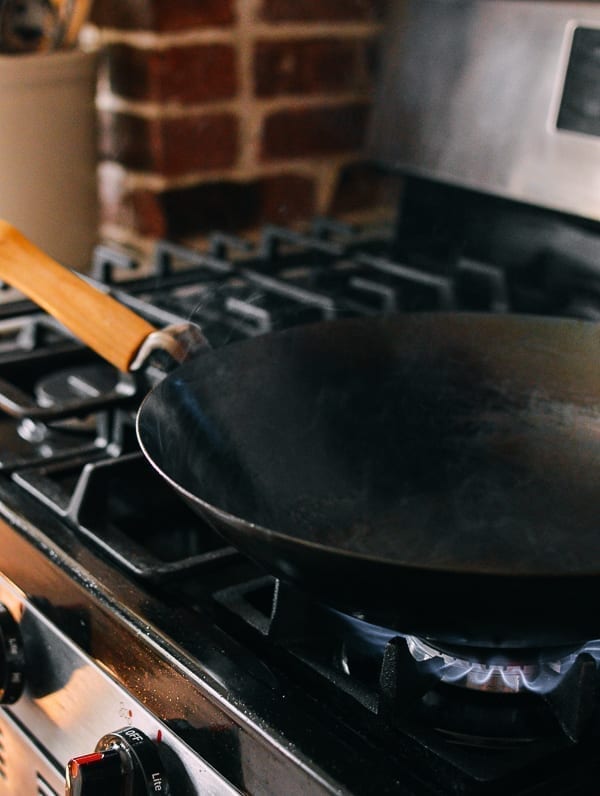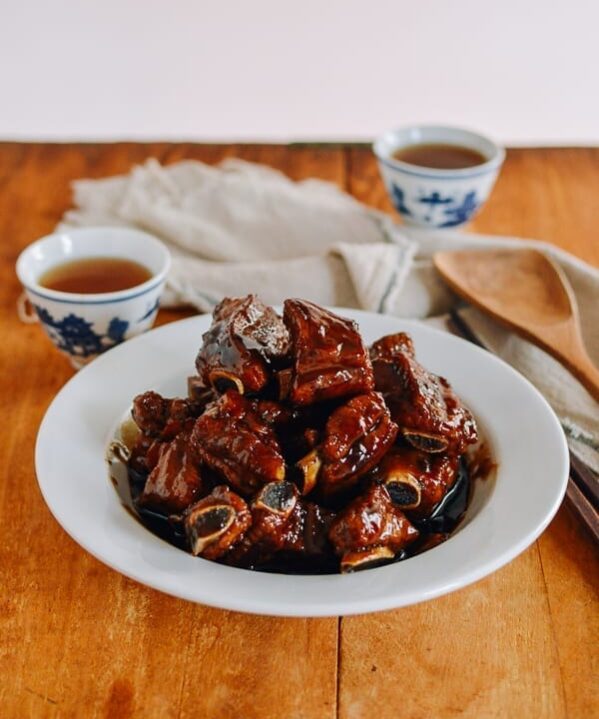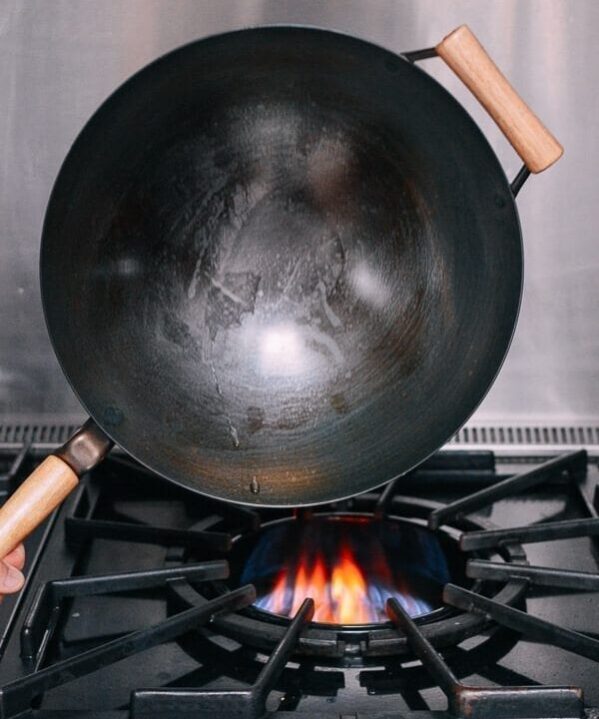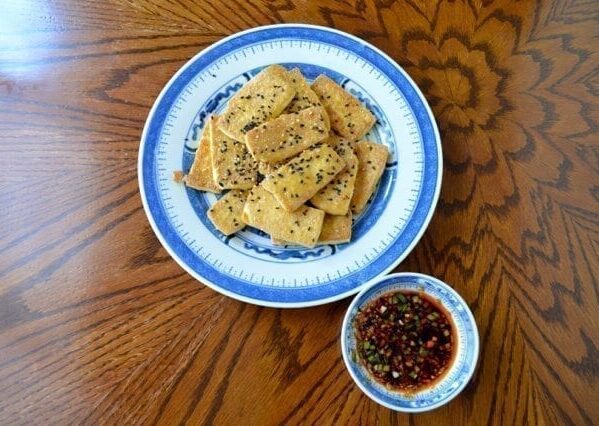We’ve all dealt with terrible messes from food sticking to a pan or wok. Maybe it’s a pan-fried fish that ends up skinless, a crusty coating of rice or noodles that’s impossible to scrub off, a fried egg that gets unceremoniously scrambled because it just wouldn’t come off the pan, or bits of meat that just won’t come loose, blackening as you watch, helpless.
The frustration is REAL!
I promise to keep this post short and sweet by telling you the ONLY kitchen technique you need to keep food from sticking to your pan or wok. No special equipment or ingredients necessary!
So, what’s the secret?
Simply PREHEAT your pan or wok BEFORE adding oil.
Let me dive in a little further and explain myself.
Why This Trick Works
I wish I were smart enough to explain this technique in more scientific detail, but I can only tell you what I know. All pots, pans, and woks have grooves––tiny peaks and valleys on the metal surface that aren’t always visible to the naked eye. These grooves trap moisture each time you wash your wok or pan.
When you preheat pans adequately—in this case, we recommend heating until they just start to smoke—it eliminates any moisture in the metal.
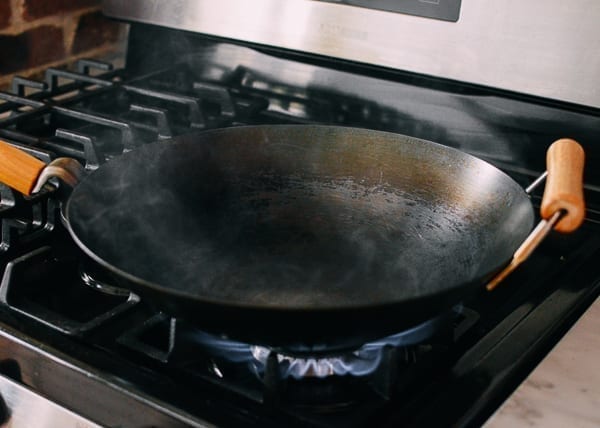
There may be other reasons, but I’m not a scientist who can explain it down to the molecules. (If you happen to be one, please sound off in the comments!) But I do know that this trick works, and it works every time.
Update: With help from a reader, we’ve also found out that preheating the wok causes the residual oils on the wok to heat up, and that once that oil heats past smoking point, the carbon in the oil bonds with the metal to fill in nooks and crannies in the uneven surface of the wok, to create a smoother, non-porous surface. This is also how the seasoning process works (oiling and heating the pan).

How to Properly Preheat Your Wok To Keep Food from Sticking
Needless to say, always start with a clean wok or pan! It also helps to have a high-quality durable carbon steel wok or cast iron pan (note: this method does NOT work with non-stick pans, which cannot be safely heated above certain temperatures). If you are using a well seasoned wok, your chances for successful non-stick cooking using this method is even better!
So, when you set it over the heat, how do you know when a pan or wok is hot enough? Simply heat until the wok starts to smoke.
You don’t want to start a fire or anything, but once you see light tendrils of smoke rising up, it’s hot enough, and you can proceed with adding your choice of oil (choose one that is good for high heat cooking, like avocado oil or canola oil).
If you find it difficult to see smoke, you can flick a couple of drops of water into your heated pan/wok. When it’s hot enough, the water drops will roll / jump around the pan like little pearls.
You can see what this looks like in the photo below (this is a carbon steel wok, but you get the idea. We poured in quite a bit of water, so that you could see the effect more clearly in the photo):
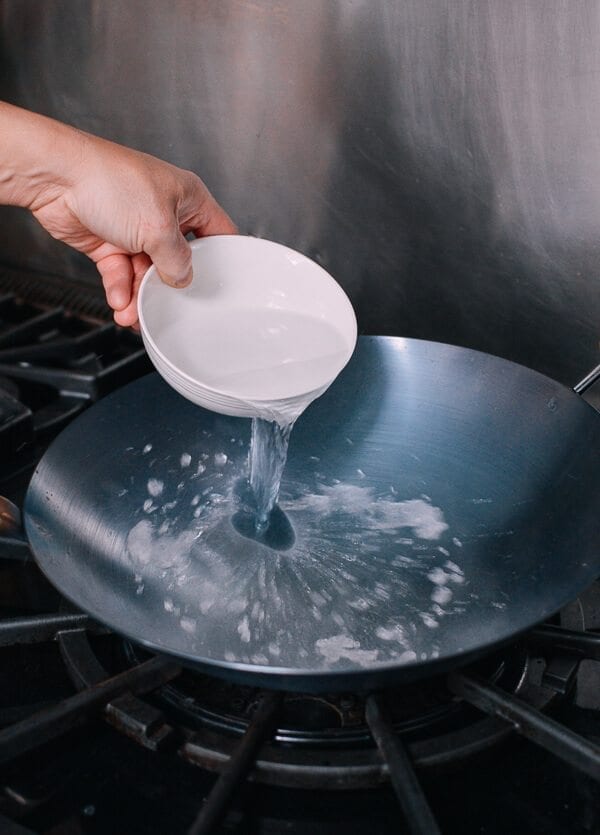
Just make sure to cook off the water drops before adding oil, or the oil will splatter.
It is also important to remember that raw proteins typically don’t want to be flipped or moved around before they’re adequately seared or browned. It doesn’t matter how you preheat your pan if you try to flip an egg before a light crust forms!
Is This Cooking Technique Safe?
Some of you might be concerned about oil temperatures being too high, which can render certain cooking oils unhealthy. Or maybe your recipe calls for low or medium heat to start.
Not to worry! Once you preheat your wok or pan to the smoke point, you can reduce the heat, letting the wok or pan cool a little before adding the oil, then heat it to the desired temperature.
But if you are cooking proteins like egg, fish, or a pork chop, heat up the oil a bit after preheating the pan/wok before adding them in.
Also, REPEAT: this trick does not apply to non-stick woks or pans! Heating non-stick cookware to the smoking point can damage the non-stick coating and become unhealthy.
All the more reason to switch to a more durable carbon steel wok or cast-iron skillet!
A Non-Stick Cooking Method that Really Works!
Trust me, apply this method when cooking eggs…
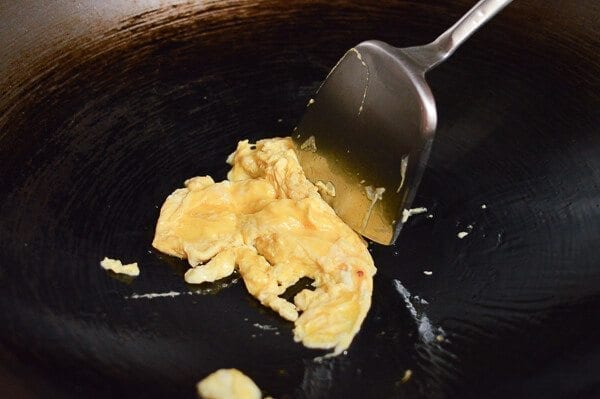
Fried rice…
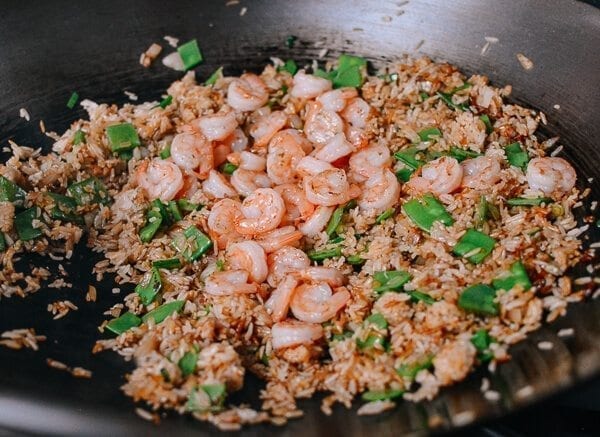
Noodle stir-fries…
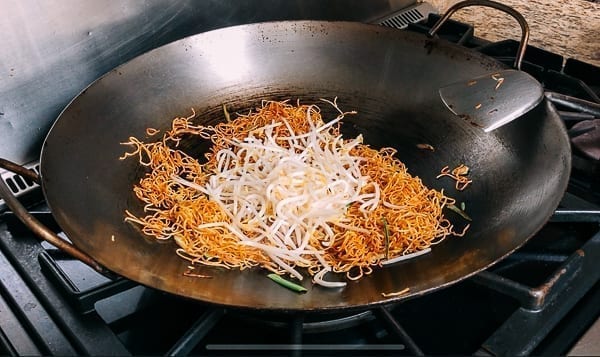
Pan-fried fish…
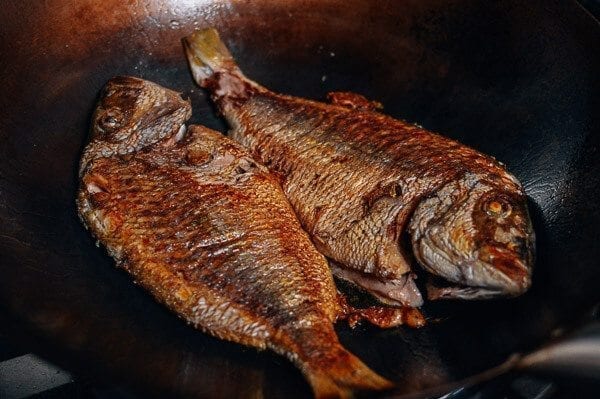
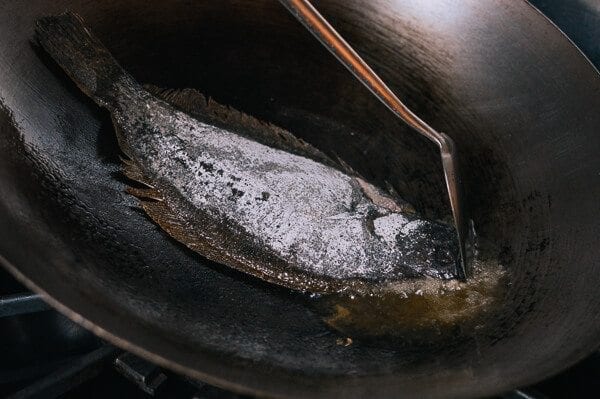
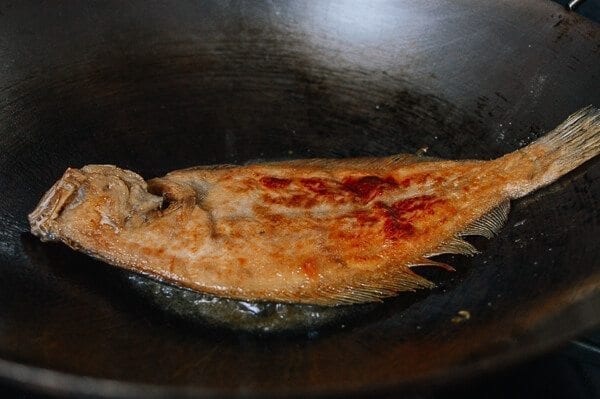
Or when searing meats for stir-fries.
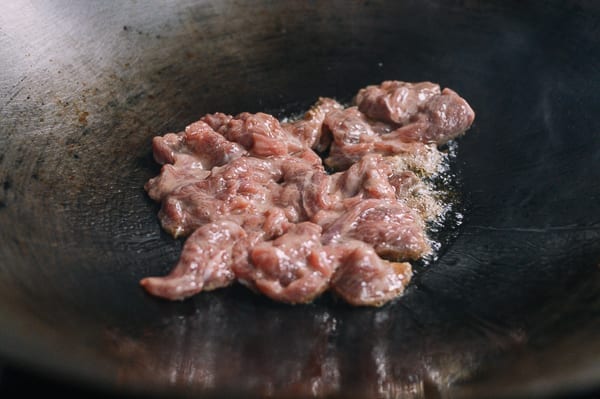
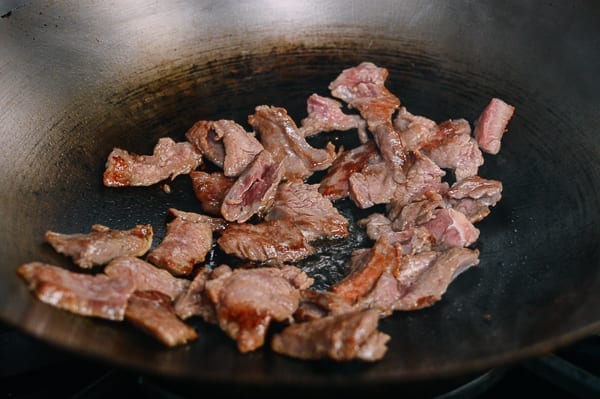
No more food getting stuck to your pan and ruined or wasted!
Here’s a review of our tips to prevent food from sticking to your wok or pan:
- Always start with a clean pan or wok.
- Use a well seasoned wok or cast iron pan. It really makes a difference. See our post on how to season a wok.
- Preheat your pan/wok to the point at which it starts to smoke before adding a high smoke point oil.
- Spread the oil evenly to completely coat the cooking surface.
- Let food, especially meats, come up to room temperature for best results.
- When frying fish, steak, or any other large piece of protein, be sure to pat it dry with a paper towel before placing it in the pan.
That’s it! Let us know if you have questions or comments below!
